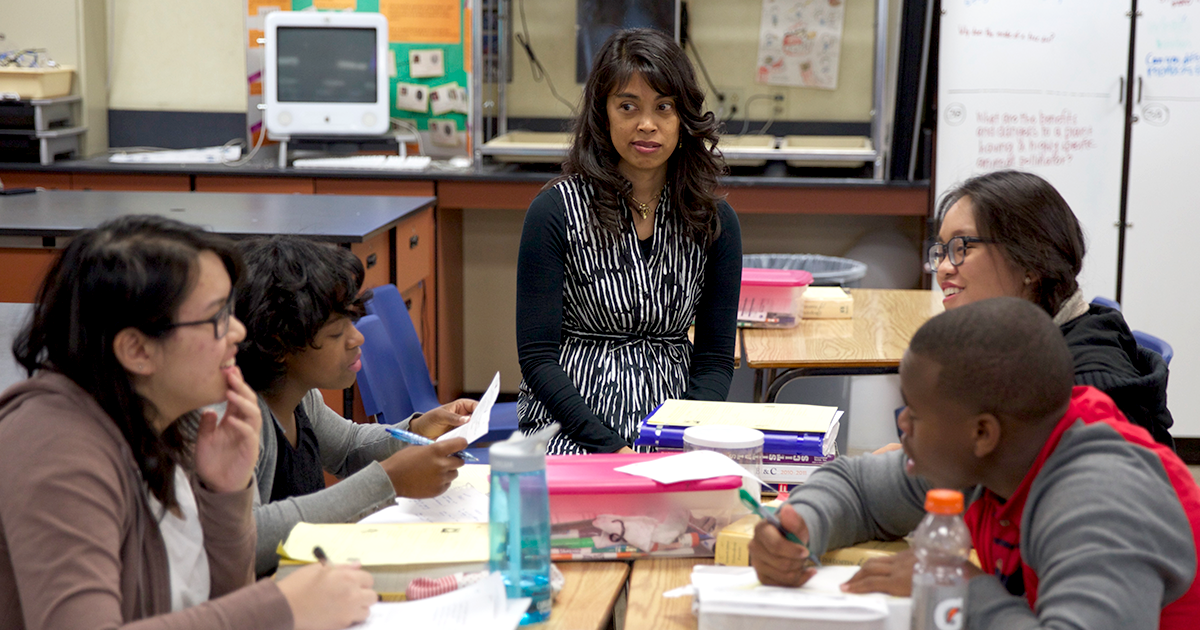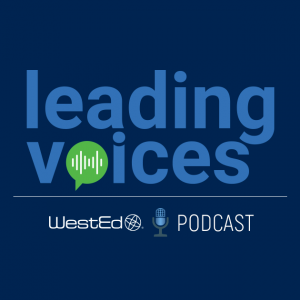Centering Equity in Social and Emotional Learning
Posted on by Erin Browder

By Dr. Erin Browder, Ed.D.
Erin Browder serves as a leader on WestEd’s Talent Development and Diversity team and provides technical assistance for the national Center to Improve Social and Emotional Learning and School Safety and for federally funded comprehensive centers (Region 2 and Region 15) and regional educational laboratories (REL West and REL-NEI).
As educators, we have a commitment to support young people to feel seen and affirmed in their culture and identity within their schooling experiences. This sense of self and agency provides a solid foundation for their social and academic well-being.
Creating culturally affirming and equitable spaces encourages positive self-identity and helps students learn to be in community with others who may have similar or different cultural backgrounds. It builds welcoming schools and spaces, along with understanding and respect for people who have different cultural backgrounds.
These social and emotional skills are instrumental to their civic readiness and ability to function in a global society. The big question is how do we create equitable schools that ensure young people develop these critical social and emotional skills in their kindergarten through grade 12 schooling?
One way is to explicitly name them in official state guidance. For the past year, I’ve led the partnership between the Region 2 Comprehensive Center (R2CC), Center for Social and Emotional Learning and School Safety (CISELSS), and the New York State Education Department (NYSED) with Carri Manchester, Associate in Educational Planning and Evaluation, Office of Student Support Services.
In efforts to align the social emotional learning (SEL) benchmarks with the state’s Culturally Responsive-Sustaining (CR-S) Education Framework and the Civic Readiness Initiative, NYSED and R2CC engaged a working group comprised of practitioners and leaders from across the state to revise NYSED’s existing SEL benchmarks.
The goal of the revision was to make equity more salient highlighting the importance of culture and identity within students’ schooling experiences and as critical building blocks in their social and emotional development. The previous benchmarks, written in 2018, did not explicitly address culture and identity, how those shape students’ learning and behaviors, and how adults’ perceptions and beliefs have formative impacts on students’ well-being.
At its core, equity is solution-centered and action-oriented. The first step in this effort was to deepen the understanding of equity and establish a shared language among workgroup members. Different than equality, equity acknowledges that students’ individual needs and access to opportunities varies, which implies they all need different supports to succeed and thrive.
Research shows that students’ social identities (e.g., race, gender, religion) shape their educational outcomes. Clear guidance that explicitly outlines what equity looks like across NYSED’s SEL benchmarks will help educators better understand key benchmarks in students’ social and academic development and will build their capacity to enact equitable practices to effectively prepare students for a racially and culturally diverse world.
“The inclusion of the adult SEL indicators makes explicit that these practices are as supportive of adults as they are of students. Adult well-being and consistent SEL practices and modeling are the foundation on which we can best support all of New York’s young people,” Manchester said.
The roadmap used to revise NYSED’s SEL benchmarks reflected the expertise of NYSED staff and its partners who actively engage in SEL programming through their membership in the Collaborative for Academic, Social, and Emotional Learning (CASEL)’s Collaborating States Initiative and similar work facilitated by CISELSS in Indiana.
We tapped strong exemplars, such as California’s Transformative SEL (T-SEL) competencies and Conditions for Thriving, which include topics of equity, identity, and agency. These resources also highlight the inclusion and guidance for adult indicators of SEL competencies.
The revised benchmarks include indicators and student behaviors that consider the rich cultural and linguistic diversity of New York’s classrooms and schools. They guide all adults in the school community to understand how students’ identities and cultural assets are central to their prosocial development and strong social skills. They help students maximize their potential from kindergarten to grade 12.
Take the following current and revised indicator 2B as an example.
Current: Recognize individual and group similarities and differences.
Revised: Recognize and affirm individual identities as well as individual and group similarities and differences, including those rooted in culture, ethnicity, race, religion, sexual orientation, gender identity or expression, ability, etc.
What does this look like in practice? In the early years, students learn how to “express respectful curiosity about the history and lived experiences of others” (2B.1b). In high school, students “reflect on the individual, cultural, and systemic impacts of stereotyping, prejudice, and microaggressions” (2B.4c).
These replace general benchmarks in the current standards that can be seen as transactional or one- sided, such as “Describe positive qualities in others” (2B.1b) and “Demonstrate respect for individuals from different social and cultural groups” (2B.4b). Expressing curiosity and practicing empathy reinforces connectedness and belonging across differences and commonalities.
Manchester emphasizes that “strong social and emotional competencies and culturally responsive and sustaining practices reinforce one another in supporting all students to learn the skills necessary for fulfilling and productive engagement in their families, friendships, and communities over their lifetime.”
Instead of ignoring or devaluing the cultural capital students bring into our classrooms and schools, they bring attention to the fact that culture and multilingualism are valuable assets that help students succeed.
This set of equity-centered, revised SEL benchmarks will increase educators’ awareness and understanding of how to support students SEL development in culturally responsive and sustaining ways. And, most importantly, they will help affirm the cultural experiences and individual excellence of each of our students.
The content of this report was developed under a grant from the Department of Education through the Office of Program and Grantee Support Services (PGSS) within the Office of Elementary and Secondary Education (OESE), by the Region 2 Comprehensive Center at WestEd under Award #S283B190057. This contains resources that are provided for the reader’s convenience. These materials may contain the views and recommendations of various subject matter experts as well as hypertext links, contact addresses, and websites to information created and maintained by other public and private organizations. The U.S. Department of Education does not control or guarantee the accuracy, relevance, timeliness, or completeness of any outside information included in these materials. The views expressed herein do not necessarily represent the positions or policies of the U.S. Department of Education. No official endorsement by the U.S. Department of Education of any product, commodity, service, enterprise, curriculum, or program of instruction mentioned in this document is intended or should be inferred.

